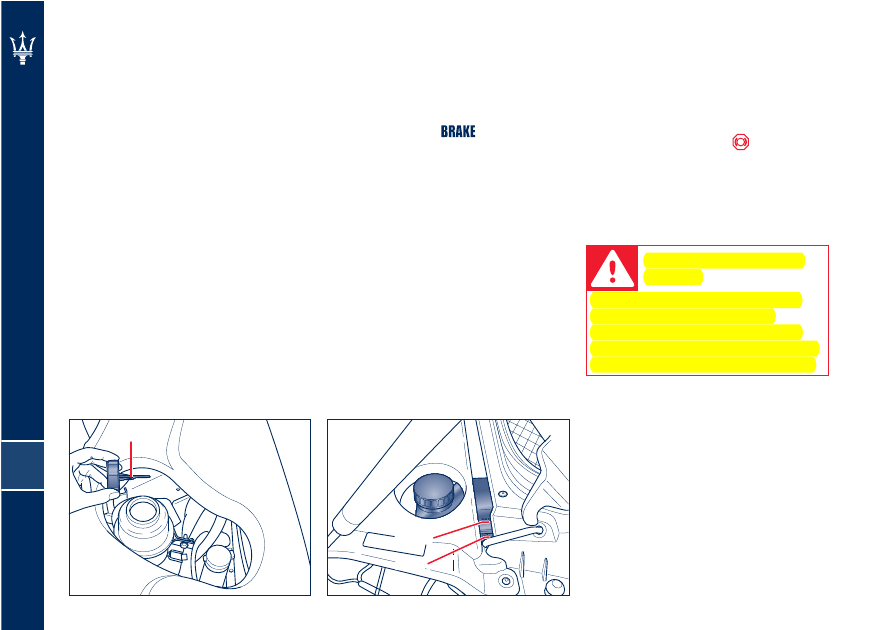Maserati Grandturismo Sport. Service Manual - part 14

MAX
MAX
MIN
MIN
MAX
8
216
Power steering fluid
WARNING: Make sure that the power
steering fluid does not come into
contact with the engine hot parts as it
is flammable.
With the vehicle on a level ground
and the engine cold, check that the
fluid level corresponds with the MAX
reference notch on the tank cap
dipstick.
To perform the check, unscrew the
cap, clean the dipstick, replace and
tighten the cap, then remove it again
and check the level.
When the oil is hot the level may also
exceed the MAX notch.
If necessary, top up with fluid
making sure that it has the same
characteristics as the one already used
in the system.
Brake fluid
Check that the fluid level in the tank
is at the maximum level. If the level
goes below the minimum level, with
the ignition key turned to MAR (ON),
the warning light
illuminates on
the instrument panel.
If additional fluid is needed, use only
the type classified as DOT4.
WARNING: The brake fluid is
hygroscopic (i.e., it absorbs humidity).
For this reason, if the vehicle is used
mainly in areas with a high rate
of atmospheric humidity, the fluid
should be changed more frequently
than indicated in the Maintenance
Schedule.
WARNING: Do not let the brake fluid,
which is highly corrosive, come into
contact with the paintwork. If this
should happen, wash the paintwork
immediately with water.
WARNING: The symbol
on the
container identifies the synthetic
type of brake fluid, distinguishing it
from the mineral type. Using mineral
fluids irreparably damages the special
rubber linings of the braking system.
California Proposition 65
Warning
THIS MOTOR VEHICLE CONTAINS
CHEMICALS KNOWN TO THE
STATE OF CALIFORNIA TO CAUSE
CANCER, BIRTH DEFECTS OR OTHER
REPRODUCTIVE HARM (see page 7)